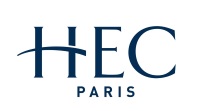No 1100: Classical Deviation: Organizational and Individual Status as Antecedents of Conformity
Rodolphe Durand and Pierre-Antoine Kremp
Additional contact information
Rodolphe Durand: HEC Paris, Postal: 1 rue de la Libération, 78350 Jouy-en-Josas
Pierre-Antoine Kremp: HEC Paris, Postal: 1 rue de la Libération, 78350 Jouy-en-Josas
Abstract: Beside making organizations look like their peers through the adoption of similar attributes (which we call alignment), this paper highlights the fact that conformity also enables organizations to stand out by exhibiting highly salient attributes key to their field or industry (which we call conventionality). Building on the conformity and status literatures, and using the case of major U.S. symphony orchestras and the changes in their concert programing between 1879 and 1969, we hypothesize and find that middle-status organizations are more aligned, and middle-status individual leaders make more conventional choices than their low- and high-status peers. In addition, the extent to which middle-status leaders adopt conventional programming is moderated by the status of the organization and by its level of alignment. This paper offers a novel theory and operationalization of organizational conformity, and contributes to the literature on status effects, and more broadly to the understanding of the key issues of distinctiveness and conformity.
Keywords: Institutional theory; Theoretical Perspectives; Social construction of organizational phenomena
58 pages, April 30, 2015
Full text files
papers.cfm?abstract_id=2637981
Questions (including download problems) about the papers in this series should be directed to Antoine Haldemann ()
Report other problems with accessing this service to Sune Karlsson ().
RePEc:ebg:heccah:1100This page generated on 2025-06-10 11:14:56.

